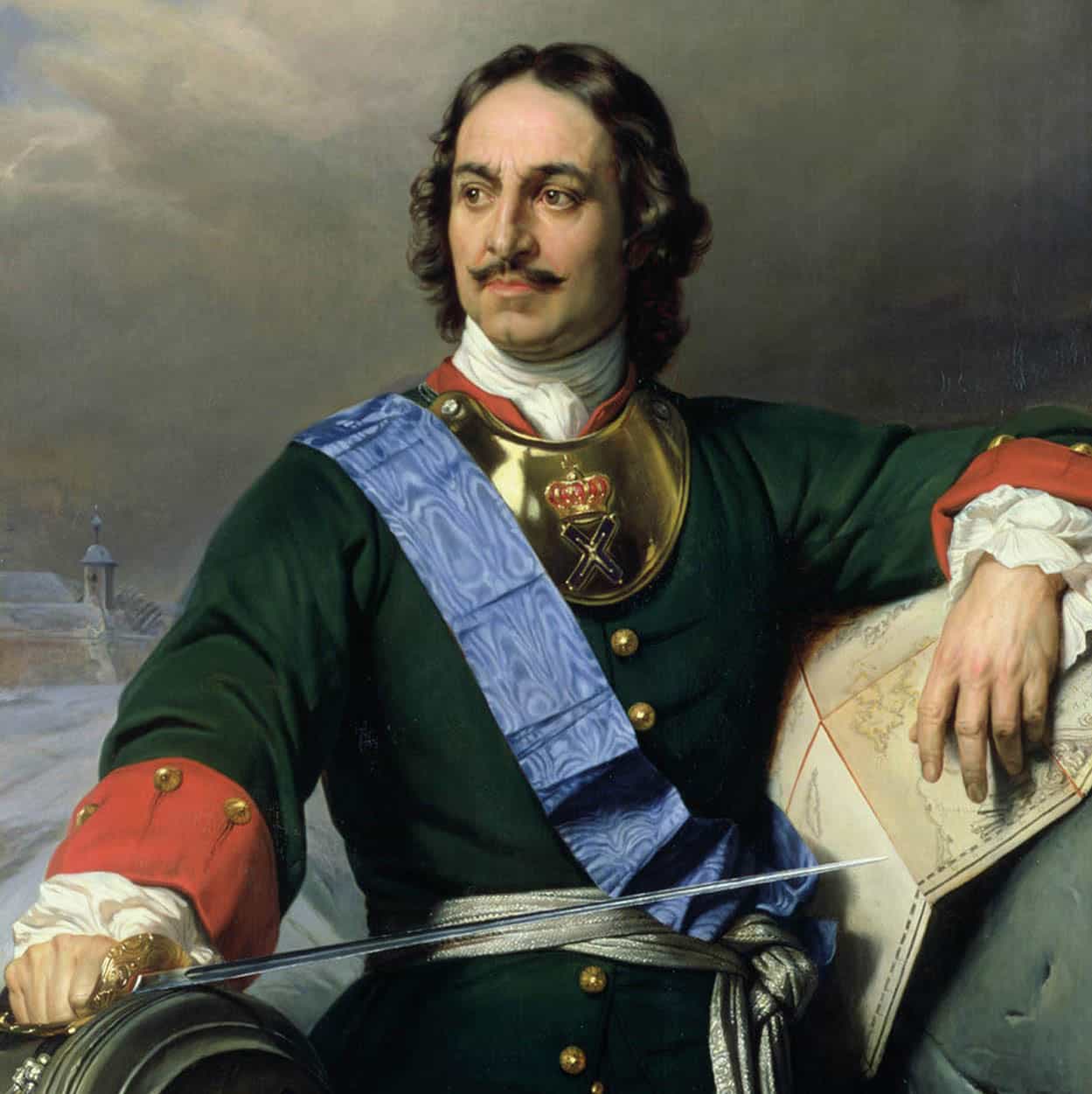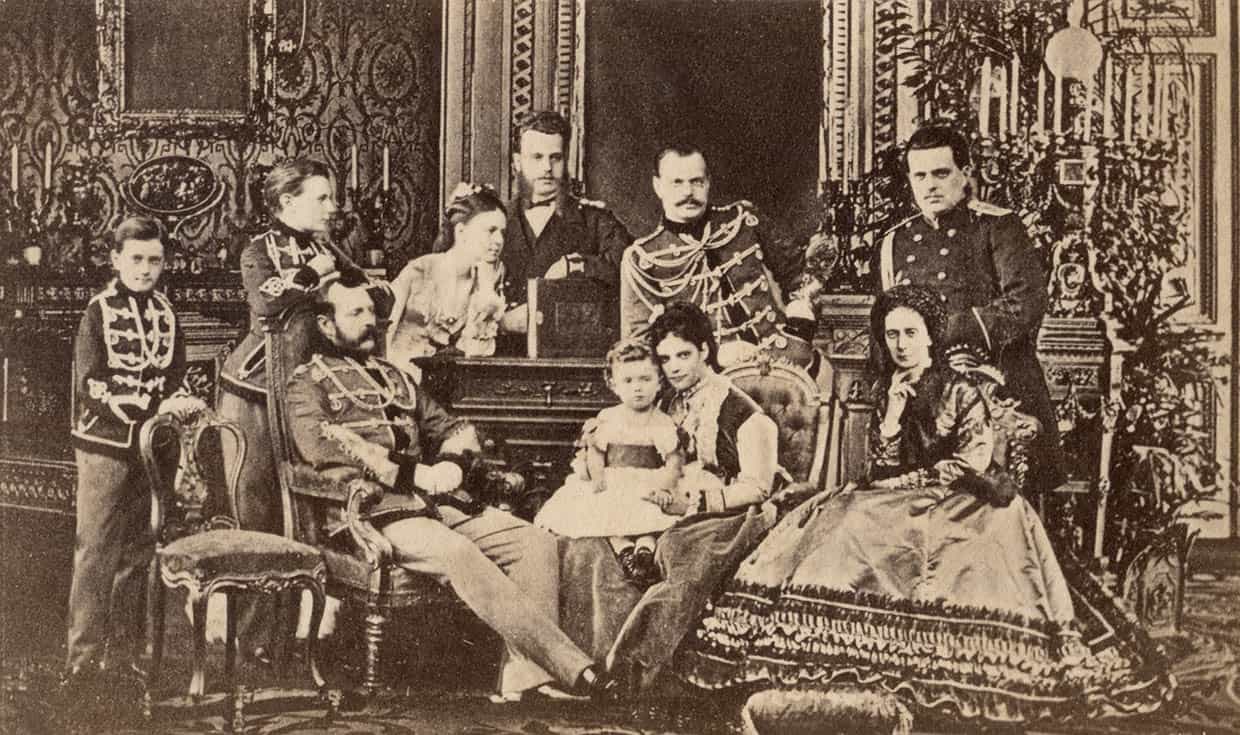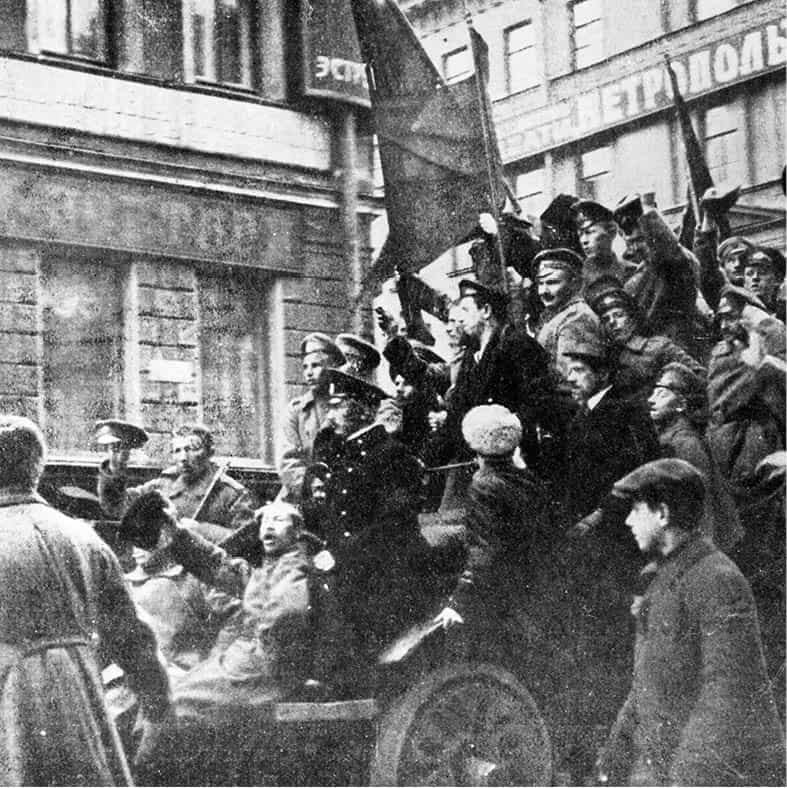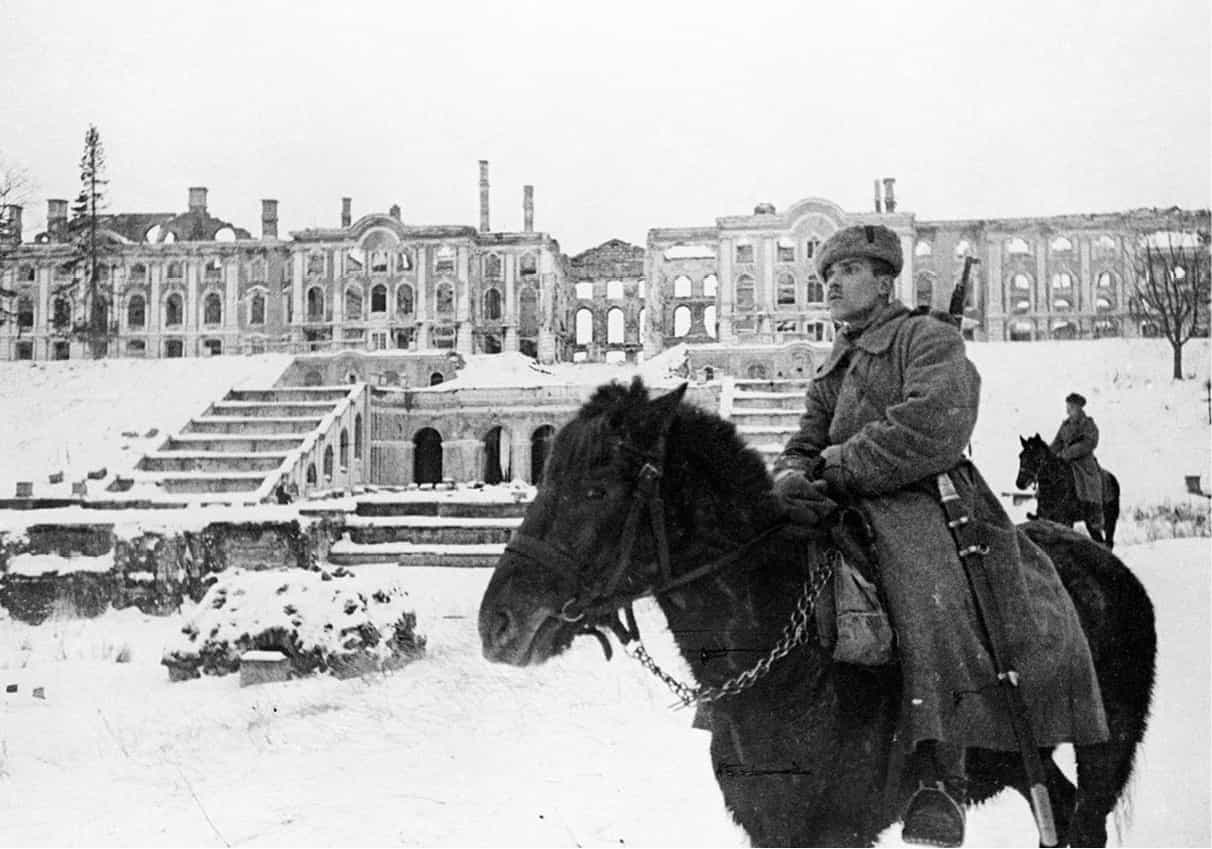St Petersburg’s history is brief – just over three centuries. Yet in that time a magnificent city rose out of the marshland, was nearly destroyed by invading armies, plundered by its own people and then slipped into provincial decline, only to rise once again as a great centre of art, beauty and culture.
Russia before Peter the Great
The Russian empire grew slowly from the 9th century. The successor state to Kievan Rus, Russia was first a jumble of city-states ruled by Grand Princes. Attacked by the Tatars (called Mongols in the West) in the 13th century and kept under their rule for nearly 250 years, the state developed without real contact with European powers. After vanquishing the ‘Tatar-Mongol Yoke’, Moscow began to gather many of its neighbouring city-states into its sphere of influence. This new state of Russia was tightly connected with the Russian Orthodox Church, which considered itself the successor to the ‘fallen Church’ of Rome and Constantinople.
After the original ruling house came to an end, a period of chaos ensued called the ‘Time of Troubles’. A new dynasty appeared in 1613, when Mikhail Romanov took the crown. Russia under the first Romanovs had a prosperous and grand capital in Moscow and was more Eastern than Western in appearance, outlook and customs.
Peter’s city
Then came the Romanov who would be called Peter the Great. Traumatised by a rebellion that took the lives of his family, Peter largely grew up on the outskirts of the capital. A giant of a man (2 metres/6ft 7in tall) with enormous energy, curiosity and a keen mind, he set off to Europe incognito to study the crafts, arts, sciences and state institutions of Russia’s European neighbours. After putting down several rebellions in his home country, he crowned himself emperor and began a series of reforms to inject a little European civilisation into his domain.

Peter the Great
Public domain
Peter’s foundations
According to legend, when the foundation was being laid for the Peter and Paul Fortress, an eagle soared in the sky, a sign of divine approbation.
In 1700 Peter the Great declared war on Sweden, which at the time controlled the majority of the Baltic Sea region. By 1703 Russia had taken the entire length of the Neva river, and Peter founded a new port, which he called Sankt Pieter Burkh, in the Dutch manner, after his patron saint. Peter envisioned a planned city, with streets laid out in a regular grid and civic architecture designed around squares and gardens. It was to be a rational, Western city – the opposite of Eastern Moscow, with its streets scattered erratically around the Kremlin. The conditions during construction were appalling: it is thought that up to 100,000 workers died of fever and disease in the marshy land. The Russian court baulked at moving to this wilderness, but Peter insisted, and in 1712 he forced 1,000 noble families and 500 merchant families to move north. By the time of Peter’s death in 1725 the city’s population had risen to 40,000.
The age of the empresses
After Peter’s death, his wife Catherine and then grandson Peter rebelled and moved the court back to Moscow. However, Empress Anna (reigned 1730–40) returned the court to St Petersburg, hired Bartolomeo Rastrelli as court architect and began to commission the city’s magnificent Russian Baroque palaces. Anna and her successor, the Empress Elizabeth (reigned 1741–62) were great lovers of stately balls and aesthetic beauty. Under Elizabeth, the Winter Palace, Smolny Convent and Catherine Palace were begun, while Peterhof was redesigned.
Anna’s ice palace
During the early years of the St Petersburg court, emperors and empresses had ‘court jokers’ – usually noblemen who had displeased the ruler or defied the law. During the reign of Empress Anna, Prince Mikhail Golitsyn married an Italian woman and converted to Catholicism. The enraged empress annulled the marriage and designated the prince as one of her court jokers. For a laugh, she decided to marry her Kalmyk maid to the prince and built a honeymoon palace for them on the Neva river by the Winter Palace. Over 17 metres (56ft) long and 5 metres (16.5ft) wide, the palace was made of carved blocks of ice, as were its furnishings: furniture, clocks, flowers in vases and even cards laid out on an ice table – all lit by thousands of candles in ice candlesticks. The poor couple somehow survived their wedding night in the palace, which stood on the frozen river during February and March of 1740.
The second Catherine became known as Catherine the Great (1762–96). The German wife of Peter III, she ended her husband’s brief rule with a coup and assumed the throne. She was both famously liberal, corresponding with Voltaire and instituting some key reforms, and famously imperious and imperial, squashing a peasant rebellion and enlarging the Russian empire. Her building spree introduced neoclassicism to the capital, and she built the Little and Old Hermitages, the Hermitage Theatre and the Marble Palace, as well as the Bronze Horseman, the statue of Peter the Great. Under the reign of these empresses, St Petersburg ceased to be an oasis of luxury in the wilderness and finally became the grand capital that Peter had envisioned.

Catherine the Great
Corbis
Stumbling towards reform
When Catherine died, her son Paul ruled briefly (1796–1801), before being killed in his bed during a palace coup. His son Alexander came to the throne. The entire 19th century was ruled by tsars named Alexander and Nicholas, who moved towards and away from modern democratic institutions. Each ruler built new palaces and cathedrals, squares and monuments, bringing their own style and vision to Peter’s city. By the end of the century, St Petersburg was a vibrant capital, filled with artists, poets, writers, scientists and scholars, as well as a growing population of merchants and industrialists – and a vast population of artisans and working people.
Alexander I (reigned 1801–25) began as a moderate reformer, but became more conservative over the course of his reign. During his reign, Russia was attacked by the French armies under Napoleon’s command; they captured the Kremlin before being forced into retreat. The General Staff Building and the Alexander Column, erected in honour of the hard-won victory over Napoleon, completed the architectural ensemble of Palace Square. Alexander I also had the Strelka redesigned, with a new Stock Exchange building and the landmark Rostral Columns.

Alexander II, surrounded by his family
Corbis
The reign (1825–55) of his brother, Nicholas I, is remembered for the Decembrist uprising – a group of noblemen and officers who called for a constitution and were executed or exiled to Siberia for their heresy. Nicholas I had his favourite architect, Carlo Rossi, design the buildings of the Senate and Alexandrinskaya ploshchad (now Ostrovskovo), one of the most aesthetically pleasing squares in the city. Nicholas also had the first railroad built (in 1837, between the city and Tsarskoe Selo) and the first permanent bridge over the Neva.
Alexander II (1855–81) was the ‘Tsar Liberator’ who freed the serfs and instituted a number of important reforms. However, the emancipation of the serfs and nascent industrialisation brought thousands of the poor into the city. Tenements went up to house them, and grander apartment buildings appeared for the growing middle class. The arts flourished, but social inequities worsened. This enlightened tsar might have responded to stem the tide of rebellion, but was killed by an assassin’s bomb before he could do so.
His son, Alexander III (reigned 1881–94) did not rule for long, and his time at the state’s helm was reactionary and conservative. When he died suddenly in 1894, his son Nicholas II found himself on the throne; a kind and pious man utterly unprepared for the role history had thrust on him. In 1904 the ‘short, victorious war’ that he foolishly instigated with Japan ended with the destruction of the Russian navy, then in 1905 he was implicated in the massacre of peaceful demonstrators on ‘Bloody Sunday’. All the while, he struggled with his own family tragedy of an ailing heir (see box). He blundered into the new century, doing nothing to stop the unrest and seemingly doing everything to make it worse.
While the empire seemed to slide towards collapse, the city continued to grow, especially with style moderne (Art Nouveau) mansions and apartment buildings that blended perfectly with the Baroque and neoclassical legacy.
Grigory Rasputin
When Nicholas II’s son and heir, Alexei, was found to be suffering from haemophilia, the desperate Empress Alexandra turned to Grigory Rasputin, a debauched Siberian peasant who claimed to be a mystical healer. Somehow he managed to ease the Tsarevich’s suffering, and Alexandra fell under his spell. One of the tsar’s advisers wrote: “His wife ruled the state and Rasputin ruled her. Rasputin inspired, the empress ordered, the tsar obeyed.” Rasputin was eventually killed in 1916 by a group of noblemen.
The revolution
When Russia entered World War I in 1914, it suffered enormous losses. The poverty-stricken, weary and deprived population had reached the end of its tether. In March 1917, the last tsar, Nicholas II, abdicated and was succeeded by a Provisional Government. Vladimir Lenin, a professional revolutionary, saw his chance to exploit the chaos and discontent. He and his comrades arrived at Finland Station in April 1917 and made brief rousing remarks to a crowd of workers that had been rallied at the station.
What’s in a name?
In August 1914, with Russia at war with Germany, Nicholas II ordered the city name changed to Petrograd (grad is the old Russian word for city). Three days after Vladimir Lenin’s death in 1924, the name was changed to Leningrad. In 1991 the residents voted to restore the city’s original name, although when the war years are remembered, Leningrad is often used in memory of those who died under that name and the surrounding administrative region is still called Leningradskaya oblast. Among Russians the city is often referred to as simply ‘Peter’.
Lenin and his Bolsheviks jockeyed for power in the workers’ soviets (councils), which countered the Provisional Government. On the night of 25 October 1917 they set in motion a coup d’état. The battleship Aurora famously fired a blank shot that signalled the start of the coup. Their soldiers claimed the city’s strategic railway stations, post office, banks and bridges, and then finally escorted the Provisional Government out of the Winter Palace. Few shots were fired. At first the rest of the country had little idea that anything had happened at all.
The Bolshevik hold on power was not absolute at first, and they moved the capital to Moscow in 1918 to ensure greater safety. The coup turned into a civil war, which lasted until 1922. St Petersburg’s first year of Soviet power was marked by bitter poverty, famine and violence, first born of chaos and then used as a tool of state repression. The tsar, his family and relatives were murdered in Yekaterinburg in 1918. Private housing was turned into communal apartments; palaces and mansions were claimed as state offices or turned into museums; churches were dynamited or made into dormitories, warehouses or offices. The population fled; in 1915 the city had over 2 million inhabitants, by 1920 there were fewer than 800,000.

Russian revolutionaries pile onto a lorry in 1917
Getty Images
The city of the arts began to lose its geniuses. The artistic elite emigrated, died of hunger, were silenced by the censors, or worse – sent to prison, exile or the executioner. Economically the city began to revive somewhat in the 1930s, when Stalin began his great industrialisation effort and decided to move the centre of the city south, starting work on the enormous House of Soviets that was to be the heart of Leningrad. But economic revival was accompanied by purges of the Party, military and industrial elite in waves of campaigns to rid the country of ‘anti-Soviet elements’. While figures are still debated, it is certain that at least 1 million people were killed in the repressions, including top military leaders.
World War II
The loss of the army’s best leaders was one reason the country was unprepared for Hitler’s forces when they attacked on 22 June 1941. The Nazi armies quickly moved through the west of the country and by September had arrived on the outskirts of Leningrad. Most of the treasures in the city’s museums were packed and shipped east by train, and whatever could not be removed was buried underground or hidden by netting and camouflage. For 900 days, from 8 September 1941 to 27 January 1944, the Germans blockaded and relentlessly bombed the city.

Peterhof was captured and all but destroyed by German troops during World War II
Getty Images
Secret documents discovered after the war showed the Wehrmacht’s intention to destroy the population. One read: ‘The Führer is determined to eliminate the city of Petersburg from the face of earth.’ Hitler planned to celebrate New Year 1942 in the imperial palaces and even printed invitations to a reception at the Astoria Hotel. During that winter the constant bombing destroyed the already scant food supplies, and rations decreased to 400g/15oz of bread for a worker and 200g/7.5oz for a woman or child. As the winter continued, rations were reduced further still, to 250g/9oz and 125g/4.5oz respectively.
Some relief came with the opening of the Road of Life across the frozen Lake Ladoga, but supplies only resumed when the blockade was broken in 1944. By then much of the city had been destroyed, virtually all of the suburban palaces had been plundered, burned and blown up. Over 1 million people died, but the German divisions never entered the city.
Collapse of the Soviet Union
The city was rebuilt after the war, but throughout the late Soviet period, it had a rather odd status: a cultural capital equal to Moscow with services at the level of provincial Tula. Perhaps it is no wonder that when Mikhail Gorbachev came to power in 1985 and introduced his policies of glasnost (openness) and perestroika (restructuring) – designed to help the nation to face up to its backwardness and revamp its moribund economy – St Petersburg became one of the strongest centres pushing for reform.
When a group of hardliners in the Soviet government organised a coup in August 1991, the leadership and population of the city were determined to defend their rights. The Kirov factory provided fax communications with the centre of resistance led by Boris Yeltsin in Moscow, Mayor Anatoly Sobchak defied the State Emergency Committee (the coup organisers) on local television, taxi drivers used their radios to pass on information about possible troop movements and nearly 200,000 people streamed into Palace Square. No troops entered the city. By the end of three tense days, the city and nation had left their Soviet past behind. At the end of 1991, the Soviet Union was disbanded and the Russian Federation tricolour flag appeared on the city’s spires for the first time in over 70 years.
The city, like the country as a whole, suffered greatly in the economic upheavals of the 1990s, as leaders dismantled the old system, while struggling with corruption and an old guard eager to turn back the clock. Hyperinflation, devaluation of the rouble and the default on government loans in 1998 wiped out people’s savings. The absence of a modern legal and banking system thwarted new business growth. St Petersburg did not reap immediate economic benefits from post-Soviet economic change; indeed, it got more gangsters than businessmen, and its beautiful palaces and museums became run-down and derelict.
The city finally got its break in 2000, when Vladimir Putin came to power. A native of the city, Putin began to shower it with funds. Increased foreign and domestic investment and plans to move the Constitutional Court to the city’s former Senate buildings have been helping St Petersburg repair a century of damage and bring new life, business and art to the northern capital.